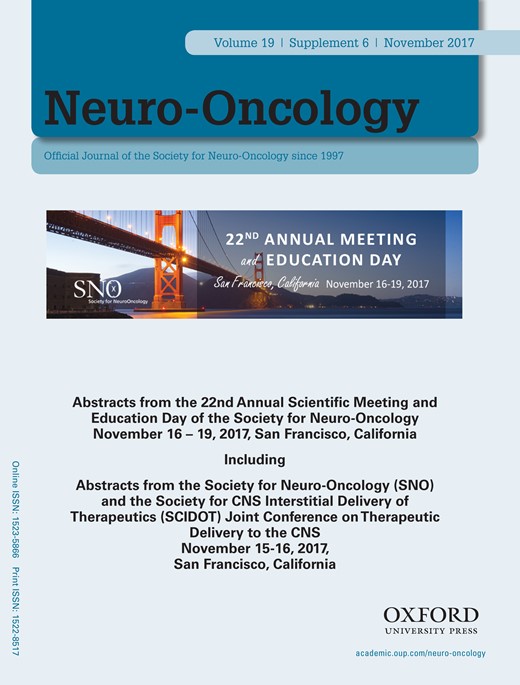-
PDF
- Split View
-
Views
-
Cite
Cite
Veit Stöcklein, Sophia Stoecklein, Birgit Ertl-Wagner, Niklas Thon, Friedrich-Wilhelm Kreth, Joerg-Christian Tonn, Hesheng Liu, NIMG-95. RESTING STATE FUNCTIONAL MRI SHOWS DISTURBANCES IN FUNCTIONAL CONNECTIVITY IN THE NON-LESIONAL HEMISPHERE IN PATIENTS WITH HIGH-GRADE GLIOMA, Neuro-Oncology, Volume 19, Issue suppl_6, November 2017, Pages vi163–vi164, https://doi.org/10.1093/neuonc/nox168.664
Close - Share Icon Share
Abstract
Gliomas are malignant brain tumors that diffusely infiltrate the brain parenchyma. We hypothesized that this could lead to disturbances in neuronal connections and that the degree of damage to neuronal connections is correlated with the aggressiveness of the tumor as indicated by WHO grade. We used resting state functional MRI (rsfMRI) to test this hypothesis.
32 patients with de-novo gliomas (14 with WHO grade II tumors (=low grade gliomas; LGG), and 18 with WHO grade III and IV (=high grade gliomas; HGG)) were prospectively included and rsfMRI data were obtained. 13/14 LGG patients and 4/18 HGG patients had IDH-mutations. We developed a standardized score to evaluate the abnormality of functional connectivity in glioma patients by comparing each patient’s data to data obtained from 1000 healthy individuals. Abnormality was quantified at each voxel of the brain and then projected onto a standardized brain template, resulting in an individual abnormality map.
Patients with HGGs had extensive disturbances in functional connectivity, which extended far beyond the solid tumor mass, invariably affecting the non-lesional hemisphere. In contrast, patients suffering from LGGs showed less damage to functional connectivity, which was mostly confined to the lesion-bearing hemisphere. In general, the degree of damage to functional connectivity was likely dominated by tumor histology, e.g. HGGs caused far more extensive damage to functional connectivity than LGGs.
rsfMRI is a novel, non-invasive and easily implementable diagnostic tool in glioma patients which could discover characteristic disturbances in the non-lesional hemisphere of HGG patients. The correlation with tumor grading suggests that rsfMRI has great potential serve as an imaging biomarker for disease burden in glioma patients.




